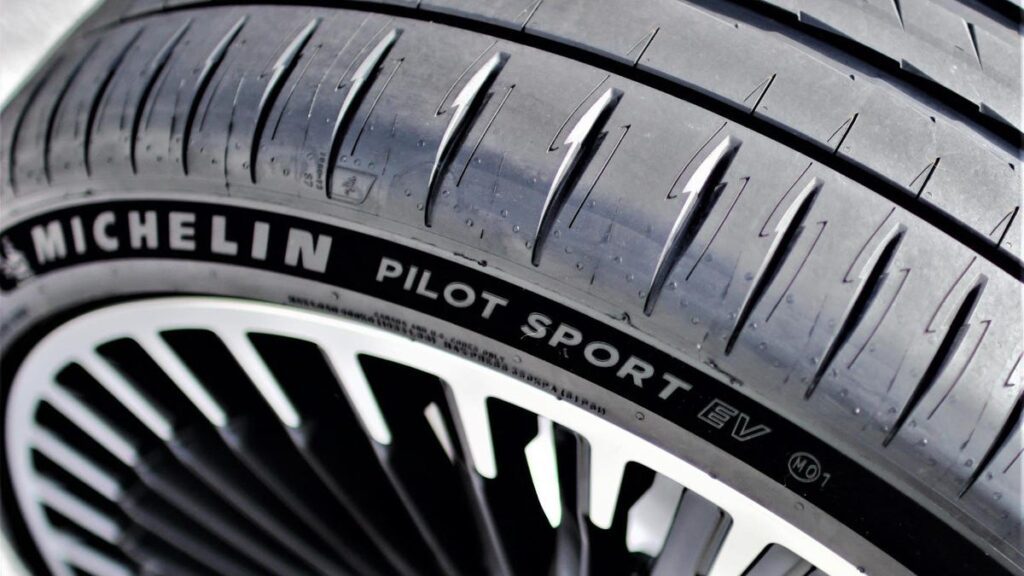Here's How EV Tires Differ From Regular Tires

There’s no denying that EVs will be a big part of the automotive future. Whether or not they’re the only option in the future, they’re here to stay regardless. Recently though, a few downsides to EVs have taken center stage: Their performance in cold weather and just how fast tires wear when they’re equipped on EVs. To that end, tire makers are marketing a tire specifically for EVs. But what exactly is an EV tire and what makes it so special?
Ride Along in the 2024 Corvette E-Ray on Track
There’s no set definition for an EV tire just yet but by looking at the few that are on the market, you can sort of get a general idea of what tire companies think an EV tire should be. They’re often characterized by two main features: low rolling resistance and ride/noise comfort. First, they’re designed to provide low rolling resistance so that EVs can get the most range out of their batteries. This is done through a combination of things like tread pattern and material composition. Second, tire companies have also been prioritizing ride and noise as well, so they fill the tires with foam for a quieter ride. These tires also tend to be engineered for longer wear life.
Screenshot: Bridgestone
The extra effort means EV tires are often also slightly more expensive than comparable tires for gas cars in some instances. A 19” Bridgestone Turanza EV tire for instance has an MSRP of $318.99 a piece; a comparable Bridgestone tire of the same size is $15 bucks less. So are you really getting something different for this higher cost?
It turns out, maybe. It depends. Wanting to know more, I did some digging so we could find out just what the deal is with EV tires. Bridgestone’s Senior Product Manager Brad Robison says the company’s internal testing shows that EVs “go through a set of tires roughly 30-40 percent more quickly than their comparable ICE counterparts.” This is because of factors like EVs extra weight, power and torque. It doesn’t seem that they actually have a way to stop this from happening, but they hope they can slow it down. To combat premature wear, Robison says Bridgestone developed PeakLife. PeakLife is described as a polymer that can both extend tread life and “deliver lower levels of rolling resistance to help increase vehicle range.”
“We see a bonding rate with silica of roughly 50 percent compared with perhaps 20 percent on conventional polymers,” Robison said. You can find this tech on the company’s aforementioned Turanza EV tire.
Other tire manufacturers more or less said the same thing. Pirelli said that there are a few things that make a tire EV-specific, like being made with different compounds for low rolling resistance and a quieter ride. They pointed me to the company’s P Zero All Season Plus with their Elect marking. They market tires with “Elect” as being specifically developed for “high performance electric and plug-in vehicles,” supposedly able to handle high torque loads and the extra weight of EVs.
Sometimes though it was hard to get someone to explain to me just what makes a tire EV specific. Michelin’s Technical Communications Director Russell Shepherd told me the brand currently sells one EV-specific tire in the U.S. in the Pilot Sport EV. Cool, but again, what makes them EV-specific? I got an around-the-way answer that really said nothing.
The Michelin Pilot Sport EV tire is a product specifically developed for OE high-performance EV fitments. This experience confirmed our understanding of the EV tire market: Consumers of EVs have similar needs to ICE tires, quite tire, efficient, traction and with performances that last.
You don’t actually have to have an EV tire for an EV. In fact, regular tires might be a better option for your EV as Tire Rack found in their testing of EV tires.
Not only can you use an ICE tire on an EV, in many cases, it may be a preferable option. EV tires have specific characteristics to carry the vehicle load and achieve the best possible range per charge, but in many cases, we’ve found the loss in range to be minor compared to ICE tires, and the potential advantages in other characteristics like wet braking or winter performance, to be worth the exchange.
The best thing you can do though if you find yourself in the market for a tire for an EV is to just do your homework. With the myriad number of tire options out there it’s just best to see which one works for you and your driving situation.



